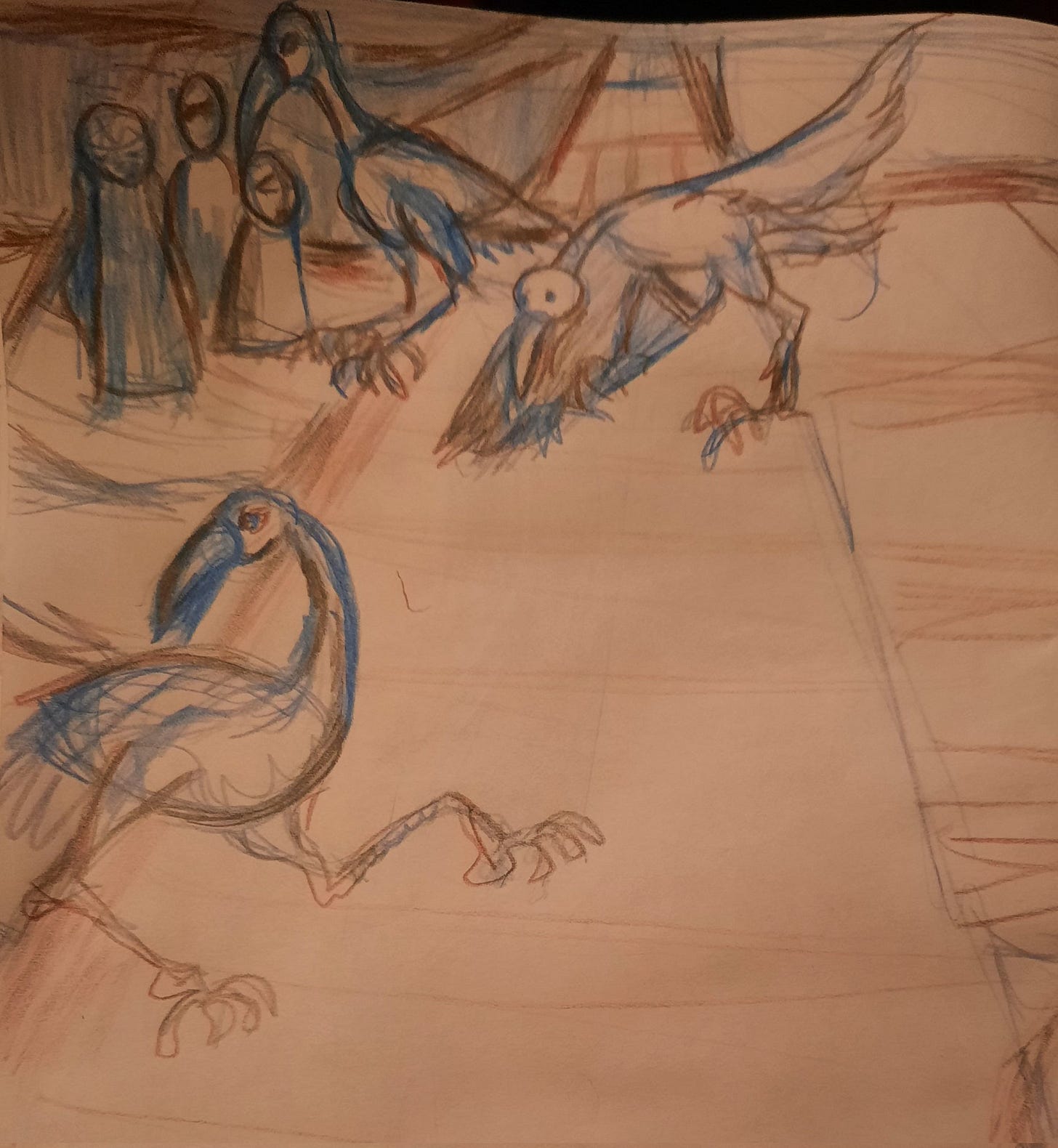little research projects for good days, quiet videos for wipe-out days
or how to keep your mind off it while the body is in repairs
I’m wobbly again after a couple of months where I was a little more capable and maybe even slightly energetic. Once again forced to limit activity, I research the history of post viral illnesses and their impacts on culture because it is far too hot to swoon on the porch in a long white dress like they did in the old days.
After the 1918/1919 influenza epidemic, there was an alarming number of cases of Encephalitis lethargica1, the disease that inspired the “sleepy sickness” in Neil Gaiman’s Sandman2. The parallels between long covid’s connection to covid, ME/CFS’s connection to Epstein Barre, and Encephalitis lethargica to the 1918/1919 influenza epidemic feel somehow unsurprising. Physicians, health care workers, politicians, and the general public either see the sequelae of symptoms following a virus as being related to an event experienced by a huge cohort of people — like a pandemic or outbreak, or they refuse to see the symptoms as anything other than a fake malady caused by bad health and hygeine habits, lack of sunshine and exercise, psychological issues, or slacking. So that is what I’m studying now, slowly and during the lucid part of the day. Comprehending what I read is a challenge nowadays. It will take time to dig in.
I don’t feel like writing more about long covid, to be real. It’s everywhere, the safety nets are frayed, resources are limited, the rest of the world wants to say it is over, the pressure to ‘get over it” just to pay bills and survive is forcing people to push themselves deeper into post exertional malaise, and not allowing them to heal. So many of us are going through it that it might be good to acknowledge where we are now, how we feel in this moment, and practice ways to focus our tiny energy stores on something other than disease, despair, and hopelessness so that we survive until we heal, are cured, or at least die somewhat more content than if we had spun out our years being angry at our situation. Take a little break and watch a video about something else.
This might not work for everyone but it takes my mind off my pain, weakness, frustration, limited energy and strength, when I can’t read without migraines, cook without forgetting what I’m doing, or walk without grabbing doorways and furniture for support. When my body won’t go but my mind is everywhere, I watch videos with no talking. I watch artists and crafters focus on their masterpieces, and video tour guides walk in interesting places that would be nice to visit. A series of slow tasks becoming something beautiful helps me to think of quiet, slow things I can do to be “busy” without blowing my stores of ATP3 for the week. Below are some videos that took me far away from my pain for a little while. There is no need to pay attention to words or meaning. The videos may have street sounds, birds chirping, soft music, that sort of thing, and in many of them one may turn the captions on to get an explanation of what is happening — for example, the tour videos use the captions to tell the significance of a place. If there is narration, it is soft. Let me know in the comments if this helps you, or if you have video suggestions. Get comfortable, relax, enjoy.
Walking playlist - places to see in the world
Strapped a camera onto a stray cat, to spy on his friends — a cat’s eye view of the world
スイーツ|Sweets - Tomei is an artist who makes clear jelly desserts to soothing music in gentle lighting
Athos Outdoor Prospector - he quietly builds little hobbit houses and hiding places in the woods, and drinks onion skin broth.
Irene's Restoration — Irene restores dolls in a cozy workshop.
In the Rain - Oil Painting - Dusan Malobabic — pretty self explanatory I think. I enjoyed this video.
Satoyama: Japan's Secret Watergarden — narrated by Sir David Attenborough, so there’s talking, but he has a very nice voice.
Abstract: A significant number of SARS-CoV-2 (COVID-19) pandemic patients have developed chronic symptoms lasting weeks or months which are very similar to those described for myalgic encephalomyelitis/chronic fatigue syndrome. This study reviews the current literature and understanding of the role that mitochondria, oxidative stress and antioxidants may play in the understanding of the pathophysiology and treatment of chronic fatigue. It describes what is known about the dysfunctional pathways which can develop in mitochondria and their relationship to chronic fatigue. It also reviews what is known about oxidative stress and how this can be related to the pathophysiology of fatigue, as well as examining the potential for specific therapy directed at mitochondria for the treatment of chronic fatigue in the form of antioxidants. This study identifies areas which require urgent, further research in order to fully elucidate the clinical and therapeutic potential of these approaches.
Keywords: Chronic fatigue syndrome; Mitochondria; Oxidative stress; Antioxidants; SARS-CoV-2




